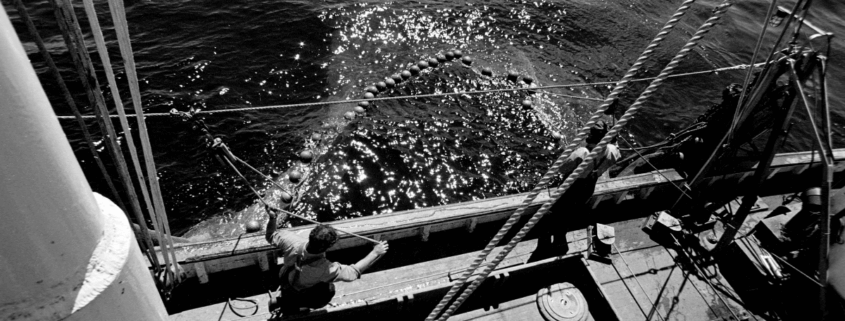Admiralty Law Protections for Seamen Exposed to Hazardous Cargo
An injury at sea is not always a sudden, traumatic event like a fall or a machinery malfunction. For many seamen working along the Mississippi Gulf Coast, the most serious dangers are the ones they cannot see. The daily handling of cargo can lead to the inhalation or absorption of toxic substances, causing debilitating illnesses that may not manifest for months or even years. When a maritime worker’s health deteriorates due to exposure to hazardous materials on a vessel, a wave of financial and medical anxiety is sure to follow.
What Is Considered Hazardous Cargo Under Maritime Law?
Under maritime law, “hazardous cargo” is a broad term that encompasses any material that poses an unreasonable risk to the health and safety of the crew, the vessel, or the marine environment. The transportation of these goods is regulated by a combination of U.S. Coast Guard regulations and international codes. Proper handling, storage, and labeling are not just best practices; they are legal requirements.
A vessel owner has a fundamental duty to inform the crew of the dangers associated with the cargo they are transporting. This includes providing access to Material Safety Data Sheets (MSDS), which detail the specific risks of a substance and the required safety precautions.
Common types of hazardous cargo that can lead to health problems for seamen include:
- Bulk Chemicals: Industrial solvents, acids, and other corrosive or toxic liquid chemicals transported in tankers.
- Petroleum Products: Crude oil, gasoline, benzene, and other refined products that can release harmful vapors.
- Asbestos: Often found in older vessels’ insulation but can also be transported as cargo, leading to mesothelioma and other lung diseases.
- Pressurized Gases: Ammonia, chlorine, and other industrial gases that can be toxic if inhaled.
- Dry Bulk Cargoes: Certain grains, minerals, and fertilizers can release toxic dust or deplete oxygen in enclosed spaces.
- Pesticides and Herbicides: Highly toxic substances that require meticulous handling procedures.
- Industrial Solvents and Cleaners: Materials used for vessel maintenance that can also be harmful with prolonged exposure.
What Are the Health Consequences of Toxic Cargo Exposure?
The health effects of exposure to hazardous materials can be acute, appearing almost immediately, or chronic, developing slowly over long periods. This latency often makes it difficult to connect the illness directly to workplace exposure, a challenge a knowledgeable maritime attorney can help overcome.
Seamen exposed to dangerous substances may develop a range of serious medical conditions, including:
- Respiratory Illnesses: Chemical pneumonitis, asthma, chronic obstructive pulmonary disease (COPD), and various forms of pulmonary fibrosis.
- Cancers: Leukemia, lymphoma, mesothelioma, and cancers of the lung, bladder, or liver are frequently linked to specific chemical exposures.
- Neurological Damage: Cognitive impairment, memory loss, peripheral neuropathy, and other central nervous system disorders.
- Skin Conditions: Severe chemical burns, chronic dermatitis, and skin cancer.
- Organ Damage: Kidney failure or liver damage resulting from the body processing toxic substances.
These conditions often require extensive and costly medical treatment, and many result in a permanent inability to return to the physically demanding work of a seaman.
What Are the Legal Foundations for a Seaman’s Recovery?
Maritime law provides distinct legal avenues for seamen who have been harmed by exposure to hazardous cargo. The appropriate path depends on the specific facts of the case, but the core protections are designed to hold negligent employers and vessel owners accountable.
The Jones Act
This vital federal law allows an injured seaman to bring a negligence claim against their employer. If the employer failed to provide a reasonably safe place to work, and that failure played any part in the seaman’s illness, the employer can be held liable. In the context of hazardous cargo, negligence can take many forms:
- Failure to provide proper Personal Protective Equipment (PPE), such as respirators, gloves, or chemical-resistant suits.
- Inadequate training on how to safely handle specific toxic substances.
- Failure to warn the crew about the dangers of the cargo being transported.
- Improper storage or ventilation of hazardous materials.
- Failure to have Safety Data Sheets (SDS) readily available for the crew.
The standard of proof for negligence under the Jones Act is often described as “featherweight.” A seaman only needs to show that the employer’s carelessness, no matter how small, contributed to the illness.
The Doctrine of Unseaworthiness
Separate from the Jones Act, all vessel owners have a strict, non-delegable duty to ensure their vessel is “seaworthy.” This means the vessel, its equipment, and its crew must be reasonably fit for their intended purpose. An unseaworthy condition can be the cause of an illness just as it can be the cause of a physical injury.
Examples of unseaworthiness related to hazardous cargo include:
- Defective or missing safety equipment.
- A poorly trained crew that mishandles dangerous materials.
- Faulty ventilation systems in cargo holds or tanks.
- Lack of proper emergency medical protocols for chemical exposure.
- An unsafe work procedure that leads to unnecessary exposure.
To succeed on an unseaworthiness claim, you do not have to prove the vessel owner was negligent—only that an unseaworthy condition existed and that it was a cause of your illness.
Maintenance and Cure
This is a fundamental, no-fault right of any seaman who becomes ill or is injured while in the service of a vessel. “Cure” refers to the right to necessary medical care until you reach maximum medical improvement. “Maintenance” is a daily stipend intended to cover basic living expenses, like rent and food, while you are unable to work. While maintenance and cure provide an immediate financial lifeline, the payments are often modest and are not a substitute for the full compensation available through a Jones Act or unseaworthiness claim.
What Does “Loss of Earning Capacity” Mean in a Toxic Exposure Case?
For a seaman diagnosed with a career-ending illness, the financial losses extend far beyond immediate medical bills. “Loss of earning capacity,” also known as future lost wages, is a critical component of damages in a maritime claim. It represents the total income you would have earned for the rest of your working life had you not been sickened by toxic cargo.
This is a complex calculation that considers many factors:
- Your age, education, and work history.
- Your earnings record, including overtime, bonuses, and benefits.
- The severity and prognosis of your medical condition.
- Your potential for promotions and career advancement.
- Whether you can return to any type of work, even in a lower-paying field.
Calculating this loss properly requires the analysis of vocational and economic professionals who can project the full financial impact of your illness over your lifetime. A fair settlement must account for this entire loss, ensuring your family’s financial stability for decades to come.
Who Qualifies as a “Seaman” for These Protections?
The right to file a claim under the Jones Act is reserved for individuals who qualify as a “seaman.” The legal definition is broad, generally covering anyone who contributes to the mission of a vessel (or a fleet of vessels) in navigation and has a substantial connection to that vessel.
This includes a wide range of maritime professionals working from Mississippi ports like Pascagoula and Gulfport:
- Deckhands, mates, and captains on ships and tugboats.
- Engineers, oilers, and other technical crew.
- Cooks, stewards, and other service personnel.
- Commercial fishermen.
- Workers on barges.
- Offshore oil and gas workers assigned to a specific vessel.
Maritime workers who do not meet the definition of a seaman, such as many longshoremen and ship repairers, may be covered by the Longshore and Harbor Workers’ Compensation Act (LHWCA), which has its own system for benefits.
What Is the Importance of Documentation in a Hazardous Cargo Claim?
Building a strong case for compensation requires meticulous documentation connecting your illness to your work at sea. Insurance companies and employers will often fight to deny this connection. Your legal team will be instrumental in gathering and preserving the evidence needed to prove your claim.
Key documentation often includes:
- Medical Records: A complete history of your diagnosis, treatment, and prognosis from your physicians.
- Employment Records: Documentation of the vessels you served on, your dates of service, and your job duties.
- Vessel Logs and Cargo Manifests: Records showing what materials were on board during your employment.
- Material Safety Data Sheets (MSDS): These documents can establish that the substances you worked with were known to be hazardous.
- Income and Tax Records: Pay stubs, W-2s, and tax returns to establish your earnings history.
- Expert Reports: Medical reports from occupational health doctors linking your illness to specific chemical exposures, as well as reports from vocational and economic professionals detailing your financial losses.
What Are Some Common Defenses Employers Use in These Cases?
Maritime employers and their insurers often raise several arguments to try to defeat or minimize an ill seaman’s claim. An experienced maritime attorney will be prepared to counter these common tactics.
- Disputing “Seaman” Status: The company may argue that your duties or connection to the vessel were not sufficient to qualify you for Jones Act protections.
- Arguing a Pre-existing Condition: The defense will likely hire its own doctors to claim your illness was caused by something other than your work, such as a genetic predisposition or lifestyle choices.
- Claiming Comparative Fault: The employer might argue that you were partially at fault for your illness, perhaps by not using safety equipment correctly, in an attempt to reduce the amount of your compensation.
- Challenging the Link Between Exposure and Illness: For diseases with long latency periods, the defense will often argue that too much time has passed to definitively link the sickness to your time on their vessel.
Have You Been Harmed by Hazardous Cargo? Contact Reeves & Mestayer Today
If you or a loved one has been diagnosed with a serious illness that you believe is connected to working as a seaman along the Mississippi Gulf Coast, you have rights under federal maritime law. The legal team at Reeves & Mestayer is committed to fighting for the rights of injured maritime workers. We can help you investigate the link between your illness and your work, document the full extent of your losses, and hold negligent employers and vessel owners accountable. We invite you to contact us for a free, confidential consultation to discuss your case.
Call us at 228-374-5151 or reach out to us online. Let us help you and your family secure the compensation you deserve.







